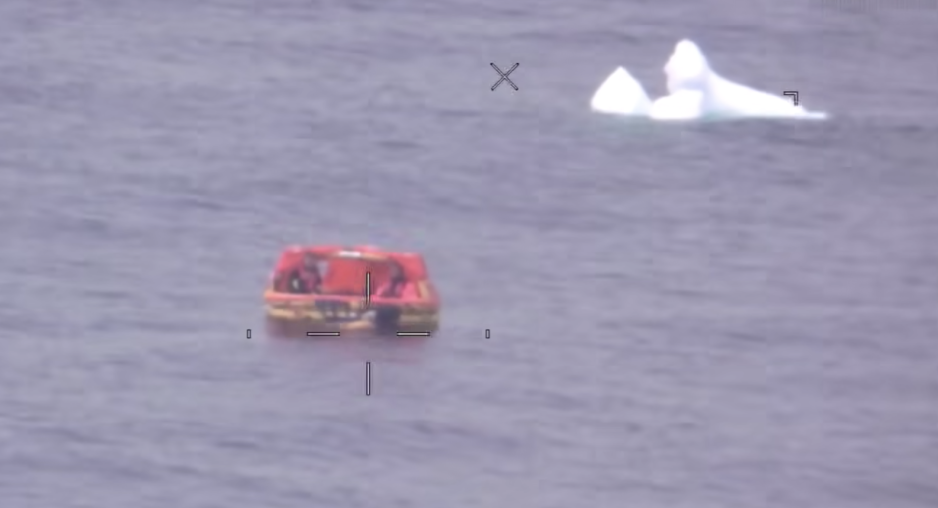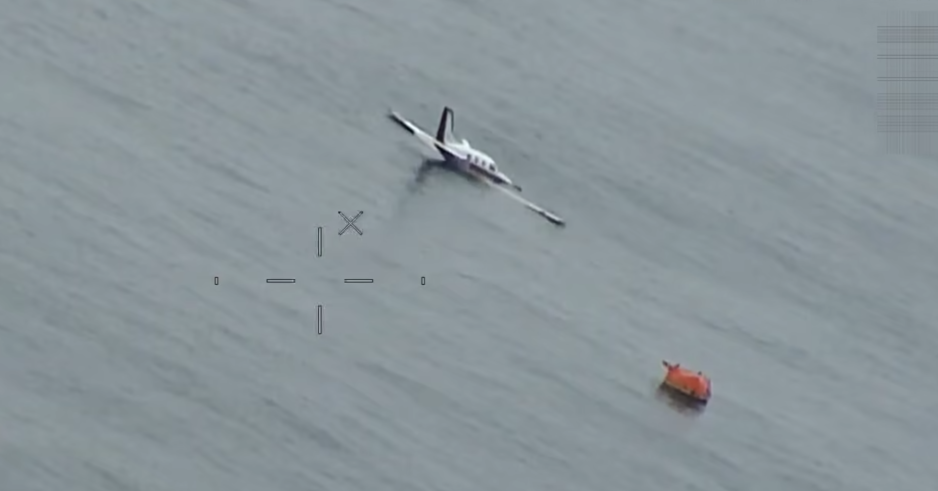Danish Joint Arctic Command Rescues Survivors of Plane Crash Off Coast of Greenland

Survival raft with iceberg in the background. (Source: Joint Arctic Command)
Greenlandic and Danish officials launched a successful joint operation to rescue two survivors of a plane crash near Qaqortoq, Greenland.
Two German pilots survived a crash landing in the icy waters off Greenland thanks to the quick response and coordination of local and Danish officials. Even during summer the water temperature in Arctic waters hovers just a few degrees above freezing.
The plane had traveled 1300 kilometers from Goose Bay in Canada with destination Narsarsuaq Airport when the emergency arose.
Following an engine failure the single-engine Piper Malibu plane traveling originating in Canada had to ditch in the Labrador Sea off the west coast of Greenland. The plane had departed from Germany in mid-July to attend an airshow in the U.S. and was now returning back to Europe.
The two German pilots managed to dispatch a mayday call to air traffic controllers in Nuuk before being forced to attempt a water landing.
Quick coordination was key
The Danish Joint Arctic Command was able to coordinate the rescue. It dispatched a challenger jet, which was able to observe the force landing and located the accident site. Both pilots managed to exit the plane and board an inflatable survival raft.

The jet then directed Danish Navy frigate Triton, which was engaged nearby in a routine Greenland patrol, to the crash site.
Less than an hour later the vessel was able to take the two pilots aboard before transferring them to a local hospital in Qaqortoq for observation.
The search and rescue capabilities show-cased in this latest incident are becoming of increasing importance as more commercial and tourist activity pushes into the region.
Last summer a cruise ship, Ocean Explorer, carrying 206 passengers and crew ran aground 1,400 km northeast of the nation’s capital Nuuk. It took three days to refloat the vessel in calm conditions.
Two years earlier a full-scale rescue exercise was carried out in the waters of Svalbard. The Arctic Mass Rescue Operation exercise (AMRO) involved a shipwrecked cruise ship carrying 200 passengers in Arctic waters.

